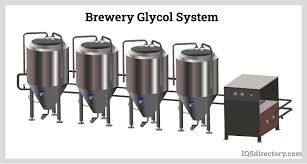The 12 Steps of Alcoholics Anonymous (AA) is a program designed to help individuals overcome alcoholism and maintain sobriety. Each step builds on the previous one, progressively helping addicts break free and experience personal growth. During the process, the members learn valuable lessons about themselves and adopt universal virtues that serve them even past recovery. This approach not only aims to help individuals quit but also lead balanced and happy lives. So, what are the 12 steps of the AA program? Let’s take a look!
Step 1: Admitting Powerlessness
The first step of the 12 Steps AA program involves individuals openly admitting harsh truths. They must acknowledge that they have lost control over their alcohol use and their lives because of it. This step is the foundation of the AA 12-Step program. Individuals must confront the severity of their situation and recognize the need for change. By admitting powerlessness, members accept that alcoholism is a disease they can’t overcome without help. This act of courage sets the stage for recovery and healing.
Step 2: Belief in a Higher Power
Step two of the AA 12-step program encourages members to believe that a power greater than themselves can restore them to sanity. This step is not necessarily a religious practice; any higher power that the individual feels connected to will do. The goal of this step is to build hope and the possibility of healing by trusting in something beyond oneself. The individuals still would have to go through the process of personal transformation, but with this step they believe that they will never walk this road alone.
Step 3: Entrusting Your Recovery to a Higher Power
In the third step, members decide to turn their will and their lives over to the care of their chosen higher power. At first glance, this seems counterproductive, but it doesn’t strip individuals of their effort and responsibility. Essentially, it is another step in building trust and hope. Members must learn to believe that their recovery is guaranteed as long as they believe it’s possible. This sense of security may come in the form of religious belief, spiritual guidance, or even “trusting the plan.”
Step 4: Moral Inventory
Step four involves taking an honest moral inventory. This step is one of the most challenging in the AA 12-Step program because it requires deep and honest introspection. Examining one’s faults in an unbiased manner is an act of great bravery. But it pays off since members get a better understanding of the underlying issues of their alcoholism. In addition, this critical self-examination helps identify the areas of their life that need healing and redemption.
Step 5: Admitting Wrongs
The fifth step builds directly on the previous one by asking members to admit the exact nature of their wrongs openly, to themselves, to another person and to the higher power. This act of vulnerability and openness helps achieve personal integrity through honesty and humility. Sharing the personal faults discovered in Step 4 alleviates the feelings of guilt and shame. When done in AA groups, it helps build an environment of mutual support and understanding. And most importantly, it helps individuals come to terms with their faults.
Step 6: Readiness to Remove Defects
Step six involves showing a willingness to remove all character defects discovered in previous steps. Members prepare themselves mentally and spiritually to let go of the negative traits. Life changes are scary, and being internally prepared to live without all the flaws weighing the person down requires bravery. This lesson applies to any radical changes AA members might experience post-recovery.
Step 7: Humble Asking
In step seven, members ask their higher power to remove their shortcomings. Members humble themselves by recognizing that recovery is not something they can achieve on their own. This step emphasizes the importance of seeking help when it’s needed and being open to receiving it.
Step 8: List of Amends
Step eight involves making a list of all people members have harmed because of the addiction and making amends to them. By this point, individuals are keenly aware of the impact of their alcoholism on others, and now they are preparing to take responsibility for it. This helps them mend relationships and build a supportive network for their sobriety.

Step 9: Making Amends
After the list is made, AA members directly make amends to each person wherever possible, unless it may harm them more. This is one of the most challenging steps because individuals must confront their past actions head-on. By showing bravery and integrity, they are rewarded by mending broken relationships and building trust again. It also teaches the important lesson of only moving forward after fixing past mistakes.
Step 10: Continued Inventory
Even though the hardest part is over, the progress has to be solidified. This involves constant vigilance and awareness, keeping track of all actions and promptly fixing mistakes. This helps members prevent old habits from resurfacing and ensures that they stay on the path of recovery. It also sets the foundation for constant self-reflection and mental discipline.
Step 11: Seeking Enlightenment
Discipline is a crucial step in recovery and living after breaking free from addiction. There is always a risk of relapse, so preventing it by conditioning is vital. This can be done in several ways. Originally, it was done through prayer and connecting to the higher power. Nowadays, it is done via various forms of meditation and self-discipline. This step helps individuals remain strong and resist urges and temptations, present and future. Regardless of the means, this step offers an enlightening experience.
Step 12: Spiritual Awakening
After completing all the previous steps, the journey doesn’t stop there. Members are encouraged to carry this message to other alcoholics and to practice these principles in regular life. The lessons they learn are valuable and will serve well not just to alcoholics but any person seeking spiritual strength. This step reinforces the communal and supportive spirit of the 12 steps of AA, encouraging sharing enlightenment with others.
The 12 Steps of Alcoholics Anonymous are very effective in helping individuals recover from alcoholism. This program does more than just help people stop drinking; it encourages personal growth and self-improvement. By following these steps, members address the root causes of their addiction and learn valuable lessons and virtues. Many who complete the program not only maintain their sobriety but also improve their personal and professional relationships. The AA 12-Step program supports individuals in leading healthier, more fulfilling lives, and they are more than happy to share this wisdom with others.







































